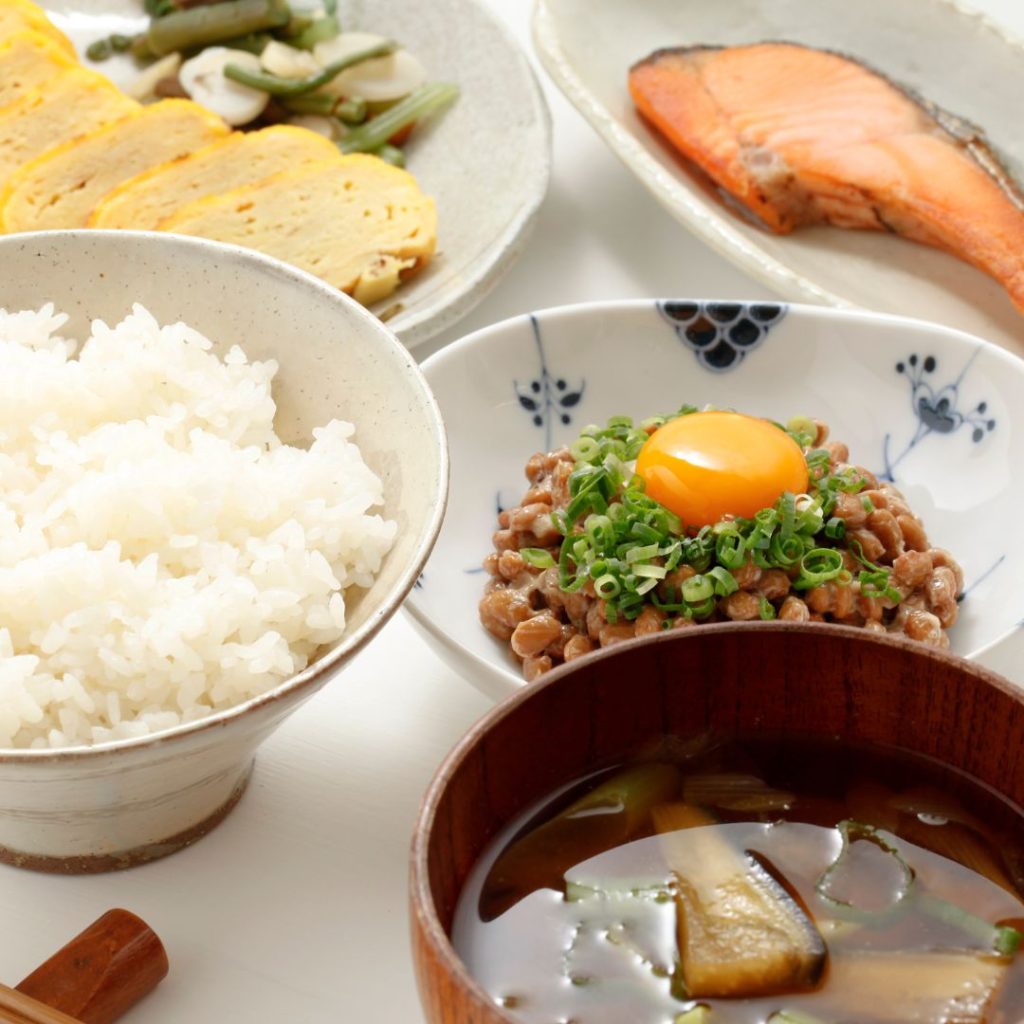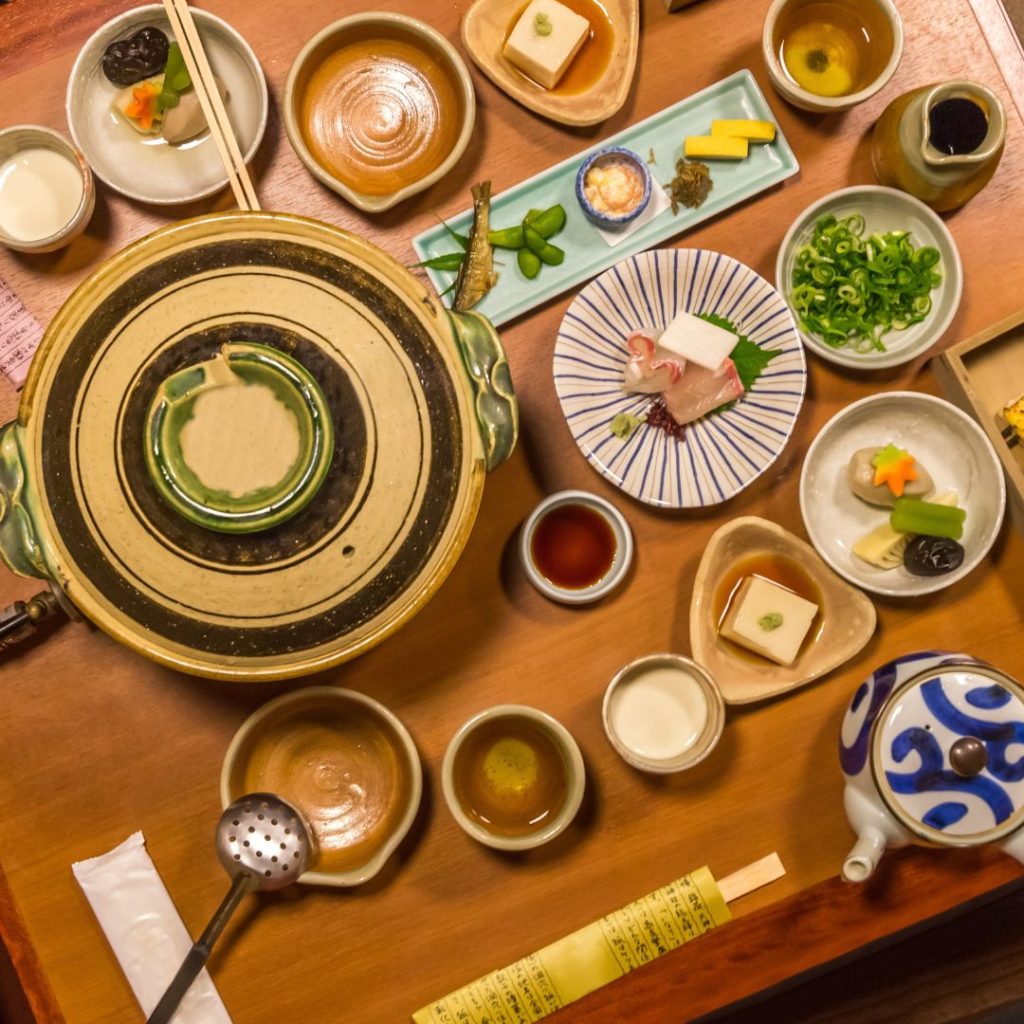Are you tired of the same old breakfast routine? Shake things up and experience the unique flavors of a traditional Japanese breakfast.
Discover the origins of this cultural treasure and learn about the key components that make it so special.
With a few simple tips, you can create your own innovative Japanese breakfast experience right in your own kitchen.
Get ready to embark on a culinary adventure that will awaken your taste buds and leave you craving more.

The Origins of a Japanese Breakfast
The history of this traditional meal is rooted in ancient Japanese customs and beliefs.
Japanese breakfasts typically consist of rice, miso soup, grilled fish, and various side dishes like pickles and fermented soybeans.
This unique combination of flavors and textures reflects the Japanese people’s appreciation for simplicity, balance, and harmony.
The origins of a Japanese breakfast can be traced back to the Edo period when the samurai class originally consumed it.
These warriors needed a nutritious and balanced meal to fuel their bodies and minds for the day.
Today, a Japanese breakfast is not only a nutritious start to the day but also a cultural symbol that embodies the values of the Japanese people.

Key Components of a Traditional Japanese Breakfast
When enjoying a traditional Japanese breakfast, be sure to include rice as the main staple, along with miso soup, grilled fish, and an assortment of side dishes such as pickles and fermented soybeans.
These key components not only provide a balanced and nutritious start to your day, but they also showcase the innovation and creativity found in Japanese cuisine.
The combination of flavors and textures in a Japanese breakfast reflects a culture that values freshness and variety.
From the umami-rich miso soup to the perfectly grilled fish, each element is carefully prepared to create a harmonious and satisfying meal.

Tips for Creating Your Own Japanese Breakfast Experience
To create your own Japanese breakfast experience, try incorporating traditional dishes like miso soup and grilled fish and experiment with different flavors and ingredients.
Start by preparing a bowl of miso soup, a comforting and savory dish made from fermented soybean paste. Add tofu, seaweed, and green onions for an extra burst of flavor.
Next, grill some fish, such as salmon or mackerel. The smoky and tender meat pairs perfectly with a bowl of steamed rice.
Don’t be afraid to add your own twist to the meal by incorporating unique ingredients like pickled vegetables or grated daikon radish.
For a refreshing beverage, try a cup of green tea or freshly squeezed citrus juice.
With these tips, you can create a Japanese breakfast that’s both traditional and innovative.

The Beauty of Japanese Breakfasts
The traditions surrounding the Japanese breakfast offer a profound glimpse into the rich cultural tapestry of Japan.
Key components like rice, miso soup, and grilled fish showcase culinary creativity, offering a harmonious and satisfying experience.
The meticulous preparation, the artful presentation, and the mindful consumption of each element in a traditional Japanese breakfast encapsulate centuries of culinary heritage.
The Japanese breakfast is not just a meal; it’s a reflection of the Japanese way of life: a harmonious blend of tradition, nature, community, and mindfulness.
It is an invitation to slow down, appreciate the beauty of the every day, and savor the flavors of a culture deeply rooted in history and tradition.
To bring this experience to your kitchen, experiment with traditional dishes like miso soup and grilled fish, and don’t hesitate to add your twist with unique ingredients.
Whether it’s pickled vegetables or grated daikon radish, you have the freedom to create a Japanese breakfast that honors tradition while embracing innovation.







Konnichiwa! (Hello!) I'm Pat Tokuyama, a Japanese tofu cookbook author, who travels for music, food, and adventure. If you like Japanese tea, checkout some of the newestorganic japanese tea, matcha bowls and noren and more!
** Curious about the Plant Based Japanese Cooking Club? ** Learn more here!